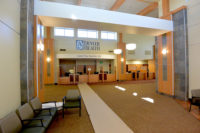A new study by the Hartford, Conn.-based non-profit organization Environment and Human Health Inc. took aim at the U.S. Green Building Council’s Leadership in Energy and Environmental Design (LEED) certification process, saying the program does not adequately address human health needs, particularly those relating to indoor air quality.
Lead author John Wargo, a Yale University professor, said that although the LEED certification program effectively encourages energy efficiency in buildings, “tighter buildings often concentrate chemicals released from building materials, cleaning supplies, fuel combustion, pesticides and other hazardous substances.”
The report makes several recommendations to help LEED become more “health protective.” One change would scrap the current rating system’s Silver, Gold and Platinum benchmarks for a numeric score; another would expand the USGBC’s board to include people with expertise in human health.
S. Richard Fedrizzi, USGBC’s president, CEO and founding chairman, acknowledges that, as a tool, LEED could be improved but says the EHHI report reflects “a serious lack of understanding about the role rating systems play in raising the bar on improved indoor air quality and specifically how LEED works.” He says the report authors—working in collaboration with the USGBC—could be helpful by continuing the “evolution of LEED.”
In a June 4 letter, Fedrizzi invited the study authors to meet with USGBC officials in Washington. According to Marie Coleman, a spokeswoman for USGBC, EHHI accepted the invitation.
The report can be found at http://ehhi.org/leed/





